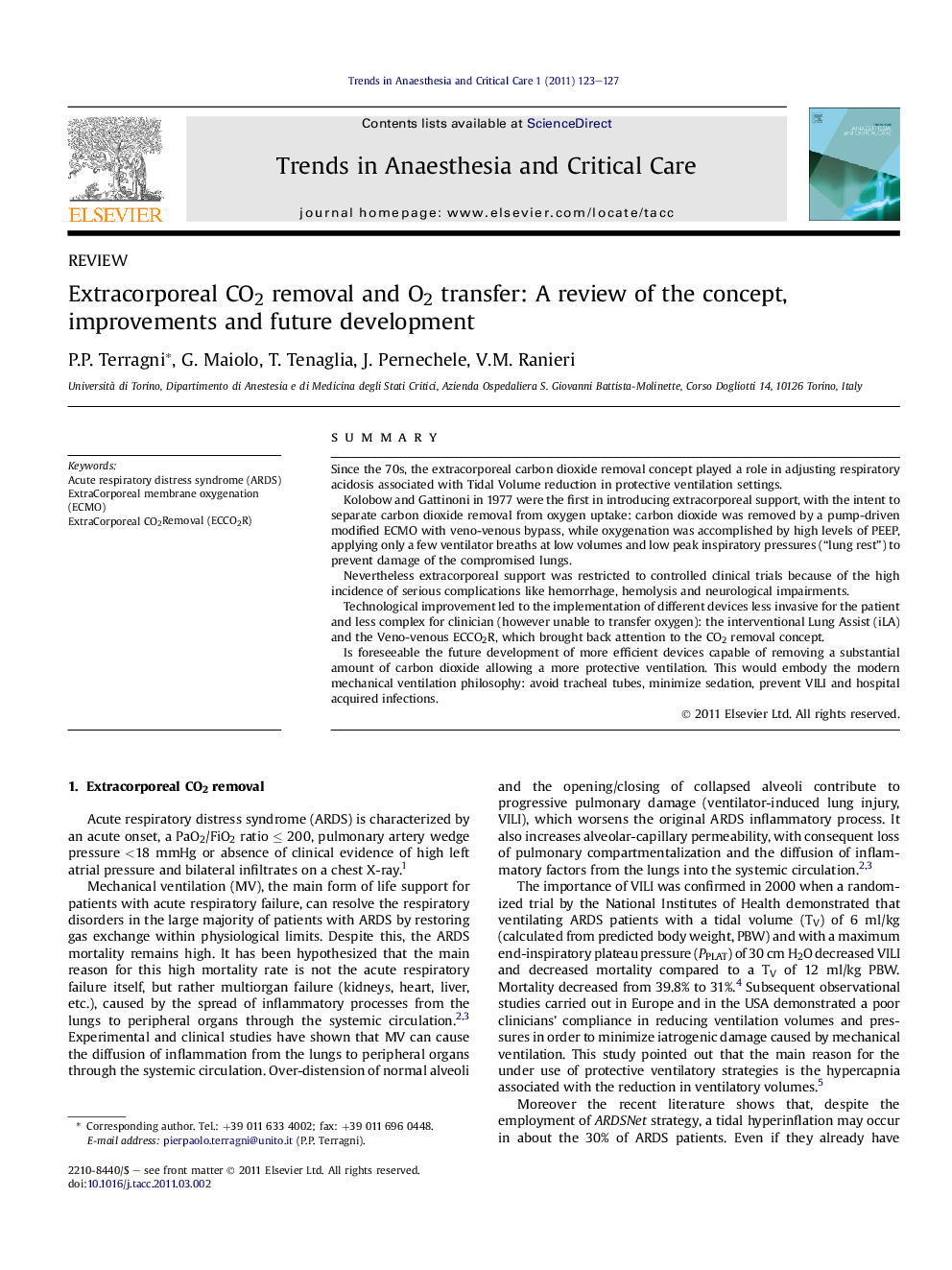| Article ID | Journal | Published Year | Pages | File Type |
|---|---|---|---|---|
| 2772837 | Trends in Anaesthesia and Critical Care | 2011 | 5 Pages |
SummarySince the 70s, the extracorporeal carbon dioxide removal concept played a role in adjusting respiratory acidosis associated with Tidal Volume reduction in protective ventilation settings.Kolobow and Gattinoni in 1977 were the first in introducing extracorporeal support, with the intent to separate carbon dioxide removal from oxygen uptake: carbon dioxide was removed by a pump-driven modified ECMO with veno-venous bypass, while oxygenation was accomplished by high levels of PEEP, applying only a few ventilator breaths at low volumes and low peak inspiratory pressures (“lung rest”) to prevent damage of the compromised lungs.Nevertheless extracorporeal support was restricted to controlled clinical trials because of the high incidence of serious complications like hemorrhage, hemolysis and neurological impairments.Technological improvement led to the implementation of different devices less invasive for the patient and less complex for clinician (however unable to transfer oxygen): the interventional Lung Assist (iLA) and the Veno-venous ECCO2R, which brought back attention to the CO2 removal concept.Is foreseeable the future development of more efficient devices capable of removing a substantial amount of carbon dioxide allowing a more protective ventilation. This would embody the modern mechanical ventilation philosophy: avoid tracheal tubes, minimize sedation, prevent VILI and hospital acquired infections.
